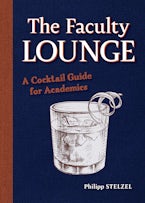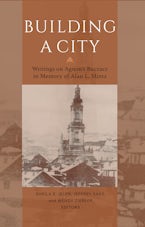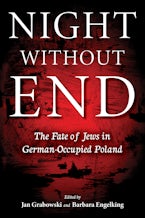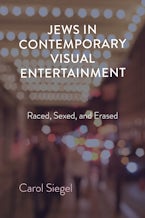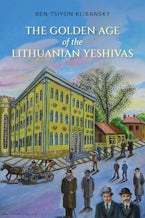
AJS 55TH ANNUAL CONFERENCE | DECEMBER 17–19, 2023 | SAN FRANCISCO, CA
Use promo code UAJS2023 for 30% IU Press titles
Featured NEW Books
After the Roundup
Escape and Survival in Hitler's France
On the nights of July 16 and 17, 1942, French police rounded up 11-year-old Joseph Weismann, his family, and 13,000 other Jews. They were held for five days at the Vélodrome d'Hiver stadium, before being sent by cattle car to the Beaune-la-Rolande transit camp. But where would they be transported to? Separated from his parents, who were deported to Auschwitz and certain death, Joseph remained with 1,000 other separated children, as they waited to discover their fates.
But instead of waiting, Joseph and his new friend, Joe Kogan, chose to risk everything in a daring escape attempt. After eluding the guards and crawling under razor-sharp barbed wire, Joseph found freedom. But how would he survive the rest of the war in Nazi-occupied France and build a life for himself? His nightmare had just begun.
After the Roundup is a story of hope, friendship, and courage in the face repression, hatred, and fear. This graphic novel, originally published in French, is based on Weismann's memoir of the same name.
Ruth Blau
A Life of Paradox and Purpose
Ruth Blau: A Life of Paradox and Purpose explores the life of a curious, if not mysterious, character in modern Jewish history. Born a French Catholic, Ruth Blau (Ben-David) (1920–2000) lived a constantly twisting life. During World War II, Blau was active in the French Resistance, and under their command, she joined the Gestapo as a double agent. After the war, she studied philosophy as a PhD candidate at the Sorbonne during the 1950s.
After converting to Judaism and moving to Israel in 1960, Blau was involved in concealing Yossele Schumacher, a seven-year-old child, as part of a militant conflict between ultra-Orthodox and secular Jews in Israel. In 1965, despite a huge scandal, she married Amram Blau, head of the anti-Zionist ultra-Orthodox Neturei Karta. After the death of her husband in 1973, Blau took upon herself to travel to Arab countries to help the Jewish communities in distress in Lebanon and Iran, where she met Yasser Arafat, head of the Palestinian Liberation Organization, and his deputy Abu Jihad. But the most significant connections she made were in Iran. In 1979, she met with the leader of the Iranian revolution, Ayatollah Khomeini.
Ruth Blau: A Life of Paradox and Purpose represents the first full-length biography of this remarkable woman. Drawing on a trove of archival materials and interviews with those who knew Ruth, Motti Inbari offers a complex, multifaceted portrait of a woman undertaking a remarkable and influential journey through modern European and Middle Eastern history.
Uprooting the Diaspora
Jewish Belonging and the "Ethnic Revolution" in Poland and Czechoslovakia, 1936–1946
In Uprooting the Diaspora, Sarah Cramsey explores how the Jewish citizens rooted in interwar Poland and Czechoslovakia became the ideal citizenry for a post–World War II Jewish state in the Middle East. She asks, how did new interpretations of Jewish belonging emerge and gain support amongst Jewish and non-Jewish decision makers exiled from wartime east central Europe and the powerbrokers surrounding them?
Usually, the creation of the State of Israel is cast as a story that begins with Herzl and is brought to fulfillment by the Holocaust. To reframe this trajectory, Cramsey draws on a vast array of historical sources to examine what she calls a "transnational conversation" carried out by a small but influential coterie of Allied statesmen, diplomats in international organizations, and Jewish leaders who decided that the overall disentangling of populations in postwar east central Europe demanded the simultaneous intellectual and logistical embrace of a Jewish homeland in Palestine as a territorial nationalist project.
Uprooting the Diaspora slows down the chronology between 1936 and 1946 to show how individuals once invested in multi-ethnic visions of diasporic Jewishness within east central Europe came to define Jewishness primarily in ethnic terms. This revolution in thinking about Jewish belonging combined with a sweeping change in international norms related to population transfers and accelerated, deliberate postwar work on the ground in the region to further uproot Czechoslovak and Polish Jews from their prewar homes.
Building a City
Writings on Agnon's Buczacz in Memory of Alan Mintz
Edited by Sheila E. Jelen, Jeffrey Saks and Wendy Zierler
The fiction of Nobel Laureate Shmuel Yosef Agnon is the foundation of the array of scholarly essays as seen through the career of Alan Mintz, visionary scholar and professor of Jewish literature at the Jewish Theological Seminary of America. Mintz introduced Agnon's posthumously published Ir Umeloah (A City in Its Fullness)—a series of linked stories set in the 17th century and focused on Agnon's hometown, Buczacz, a town in what is currently western Ukraine—to an English reading audience, and argued that Agnon's unique treatment of Buczacz in A City in its Fullness, navigating the sometimes tenuous boundary of the modernist and the mythical, was a full-throated, self-conscious literary response to the Holocaust. This volume is an extension of a memorial dedicated to Mintz's memory (who died suddenly in 2017) which combines selections of Alan's work from the beginning, middle and end of his career, with autobiographical tributes from older and younger scholars alike. The essays dealing with Agnon and Buczacz remember the career of Alan Mintz and his contribution to the world of Jewish studies and within the world of Jewish communal life.
Journals
Aleph is devoted to the exploration of the interface between Judaism and science in history. We welcome contributions on any chapter in the history of science in which Judaism played a significant role, or on any chapter in the history of Judaism in which science played a significant role. Science is conceived very broadly, including the social sciences and the humanities. History of science is also broadly construed within its social and cultural dimensions.
Aleph is published in partnership with the Sidney M. Edelstein Center for the History and Philosophy of Science, Technology and Medicine at The Hebrew University of Jerusalem.
Antisemitism Studies, a double-blind, peer-reviewed academic journal, provides the leading forum for scholarship on the millennial phenomenon of antisemitism, both its past and present manifestations. Multidisciplinary and international in scope, the semiannual journal publishes a variety of perspectives on, and interpretations of, the problem of antisemitism and its impact on society. Each issue is composed of a brief introduction by the editor, a selection of scholarly articles, and reviews of significant new books published on the subject.
Antisemistism Studies is published in partnership with the Canadian Institute for the Study of Antisemitism (CISA).
Israel Studies presents a multidisciplinary scholarship on Israeli history, politics, society, and culture. Each issue includes essays and reports on matters of broad interest reflecting diverse points of view. Temporal boundaries extend to the pre-state period, although emphasis is on the state of Israel. Due recognition is also given to events and phenomena in diaspora communities as they affect the Israeli state.
Israel Studies is sponsored by the Ben-Gurion Research Institute for the Study of Israel and Zionism at Ben-Gurion University of the Negev and the Schusterman Center for Israel Studies at Brandeis University, in affiliation with the Association for Israel Studies.
Jewish Social Studies plays an important role in advancing the understanding of Jewish life and the Jewish past. Key themes are issues of identity and peoplehood, the vistas opened by the integration of gender as a primary category in the study of history, and the multiplicities inherent in the evolution of Jewish societies and cultures around the world and over time. Regular features include work in anthropology, politics, sociology, religion, and literature, as well as case studies and theoretical discussions, all of which serve to re-chart the boundaries of Jewish historical scholarship.
Nashim
A Journal of Jewish Women's Studies & Gender Issues
Nashim provides an international, interdisciplinary, and scholarly forum in Jewish women’s and gender studies, and is the only one of its kind. It creates communication channels within the Jewish women’s and gender studies community and brings forth that community’s work to a wider audience. Each thematic issue is produced in consultation with a distinguished feminist scholar, and includes articles on literature, text studies, anthropology, archeology, theology, contemporary thought, sociology, the arts, and more.
Nashim is a joint publication of the Hadassah-Brandeis Institute at Brandeis University, and the Schechter Institute of Jewish Studies in Jerusalem.
For more than thirty years, Prooftexts has provided a forum for the growing field of Jewish literary studies. Integral to its mission is an attempt to bring together the study of modern Jewish literatures (in Hebrew, Yiddish, and European languages) with the literary study of the Jewish classical tradition as a whole. Since its inception, the journal has as much stimulated and created the field of Jewish literary studies as it has reflected its achievements.
Published semiannually, American Religion offers a forum for intellectual and creative engagement with religion in the Americas. As the journal explores the boundaries of both “America” and “religion,” and ways in which the two intersect, the journal’s broader intervention in the publishing landscape takes exception to more standard historical conceptions of “American religion” as denominational history, surveys of religious diversity, and other dimensions related to “church history” and its adjunct cultural productions. Each issue will feature a review essay and a series of shorter reviews of important emerging work. The review section will focus on academic book titles but also remain open to consideration of other important cultural landmarks, including works of literature, music, video, performing art, theater, food, and technology. The journal will also expand into more experimental modes of expression—one for poetry, fiction, and creative non-fiction—which will run in the print edition, and an online platform that will serve as a host to innovate digital scholarship in the field.
History & Memory explores the manifold ways in which the past shapes the present and is shaped by present perceptions. We focus on a wide range of questions relating to the formation of historical consciousness and collective memory, the role of historical memory in modern and premodern cultures, and the relationship between historical research and images of the past in different societies and cultures. History & Memory aims to explore not only official representations of the past in public monuments and commemorations, but also the role of oral history and personal narratives, the influence of the new media in shaping historical consciousness, and the renewed relevance of history writing for emerging nations and social conflicts.







